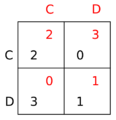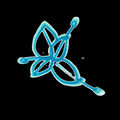Template:Selected anniversaries/June 2: Difference between revisions
Jump to navigation
Jump to search
No edit summary |
No edit summary |
||
| Line 1: | Line 1: | ||
<gallery> | <gallery> | ||
||1743: Alessandro Cagliostro born ... occultist and explorer. | ||1743: Alessandro Cagliostro born ... occultist and explorer. Pic (bust). | ||
||1785: Jean Paul de Gua de Malves dies ... mathematician and academic. | ||1785: Jean Paul de Gua de Malves dies ... mathematician and academic. Pic (book cover). | ||
||1787: Nils Gabriel Sefström born ... chemist. Sefström was a student of Berzelius and, when studying the brittleness of steel in 1830, he rediscovered a new chemical element, to which he gave the name vanadium. Pic: https://commons.wikimedia.org/wiki/File:Nils_Gabriel_Sefstr%C3%B6m_(1787-1845)_3.png | ||1787: Nils Gabriel Sefström born ... chemist. Sefström was a student of Berzelius and, when studying the brittleness of steel in 1830, he rediscovered a new chemical element, to which he gave the name vanadium. Pic: https://commons.wikimedia.org/wiki/File:Nils_Gabriel_Sefstr%C3%B6m_(1787-1845)_3.png | ||
| Line 14: | Line 14: | ||
File:Guglielmo Marconi.jpg|link=Guglielmo Marconi (nonfiction)|1896: [[Guglielmo Marconi (nonfiction)|Guglielmo Marconi]] applies for a patent for his wireless telegraph. | File:Guglielmo Marconi.jpg|link=Guglielmo Marconi (nonfiction)|1896: [[Guglielmo Marconi (nonfiction)|Guglielmo Marconi]] applies for a patent for his wireless telegraph. | ||
||1907: Jules Guéron dies ... physical chemist and atomic scientist who played a key role in the development of atomic energy in France. | ||1907: Jules Guéron dies ... physical chemist and atomic scientist who played a key role in the development of atomic energy in France. Pic. | ||
||1916: Abraham Seidenberg born ... mathematician. Pic. | ||1916: Abraham Seidenberg born ... mathematician. Pic. | ||
| Line 24: | Line 24: | ||
File:Lloyd Shapley (1980).jpg|link=Lloyd Shapley (nonfiction)|1923: Mathematician and economist [[Lloyd Shapley (nonfiction)|Lloyd Shapley]] born. He will define game theory as "a mathematical study of conflict and cooperation." | File:Lloyd Shapley (1980).jpg|link=Lloyd Shapley (nonfiction)|1923: Mathematician and economist [[Lloyd Shapley (nonfiction)|Lloyd Shapley]] born. He will define game theory as "a mathematical study of conflict and cooperation." | ||
||1924: Hans-Egon Richert born ... mathematician who worked primarily in analytic number theory. | ||1924: Hans-Egon Richert born ... mathematician who worked primarily in analytic number theory. Pic search: https://www.google.com/search?q=Hans-Egon+Richert | ||
||1927: Henry Berge Helson born ... mathematician at the University of California at Berkeley who worked on analysis. Pic. | ||1927: Henry Berge Helson born ... mathematician at the University of California at Berkeley who worked on analysis. Pic. | ||
| Line 30: | Line 30: | ||
||1932: Taira Honda born ... mathematician working on number theory who proved the Honda–Tate theorem classifying abelian varieties over finite fields. Pic: http://www.learn-math.info/mathematicians/historyDetail.htm?id=Honda | ||1932: Taira Honda born ... mathematician working on number theory who proved the Honda–Tate theorem classifying abelian varieties over finite fields. Pic: http://www.learn-math.info/mathematicians/historyDetail.htm?id=Honda | ||
||1942: Andrew Russell Forsyth dies ... mathematician. | ||1942: Andrew Russell Forsyth dies ... mathematician. Pic. | ||
|| | ||1941: William Peddie dies ... physicist and applied mathematician, known for his research on colour vision and molecular magnetism. Pic. | ||
||1948: Karl Brandt dies ... German SS officer ... T4 | ||1948: Viktor Brack dies ... German physician ... T4. | ||
||1948: Karl Brandt dies ... German SS officer ... T4. | |||
||1948: Karl Gebhardt dies ... physician. | ||1948: Karl Gebhardt dies ... physician. | ||
Revision as of 15:58, 25 January 2019
1896: Guglielmo Marconi applies for a patent for his wireless telegraph.
1922: Game theory experts predict that Lloyd Shapley will be born "within two years at the most."
1923: Mathematician and economist Lloyd Shapley born. He will define game theory as "a mathematical study of conflict and cooperation."
2014: Pharmacologist and chemist Alexander Shulgin dies. He discovered, synthesized, and personal bioassayed over 230 psychoactive compounds for their psychedelic and entactogenic potential.
2019: Signed first edition of Blue Foliage purchased for an undisclosed amount by "a consortium of Gnomon algorithm theorists based in New Minneapolis, Canada."




